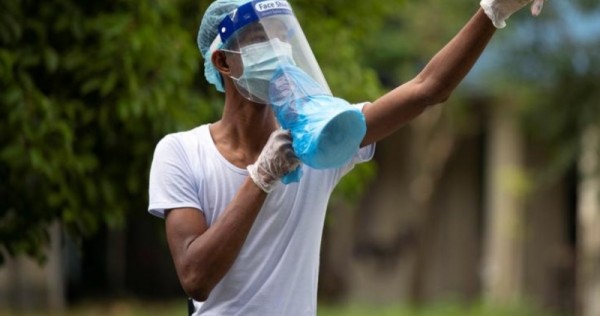YANGON – Myanmar has quarantined tens of thousands of people to prevent a coronavirus outbreak from overwhelming its fragile healthcare system but public health experts and doctors say the strategy is on the brink of collapse as infections surge.
The Southeast Asian nation is housing more than 45,000 people, including Covid-19 patients as well as those yet to be tested, their close contacts and returning migrant workers, in buildings from schools and monasteries to government offices and tower blocks, mostly run by volunteers.
Even those with no symptoms or mild symptoms are hospitalised or quarantined, part of an ambitious plan to stop the virus swamping a chronically underfunded health system.
But the “maximum containment” strategy pursued by Myanmar since its first cases were confirmed in March could backfire if overburdened facilities put people off quarantine altogether, public health expert Kyaw San Wai told Reuters.
“This strategy was implementable up to mid-August given Myanmar’s low caseloads but as case numbers increased dramatically from late August, especially in Yangon, this approach quickly pushed both the health centres and quarantine centres to the brink,” he said.
Officials from the health ministry did not answer calls seeking comment.
After weeks without a local transmission, Myanmar reported an outbreak in the western Rakhine state in mid-August that has since spread across the country.
On Thursday, authorities reported 535 new infections and three deaths, making a total of 7,827 cases and 133 deaths.
While some other Asian countries have pursued a strict containment strategy, elsewhere only more serious cases have been treated in hospital while others isolate at home.
“In other countries, they let people stay home and hospitalise them only if they are in a serious condition,” said Dr Kaung Myat Soe, chief of a temporary hospital in the commercial capital of Yangon.
“In this country … we worry about young children or old people becoming casualties so we isolate them.”
The number of people quarantined has more than doubled from about 19,000 in August to more than 45,000 as of Sept 21, according to Ministry of Health data.
After decades of neglect under military rule, Myanmar’s health system has been ranked among the world’s weakest.
As of early this year, there were 330 intensive care beds for the 54 million population. The World Health Organization in 2018 put the number of doctors at 6.7 per 10,000 people.
Authorities are racing to build and requisition more facilities to accommodate the numbers.
Three nights in hell
Stories of facilities without electricity or water and positive patients forced to share rooms with untested people have been reported in the media.
“The rush to mobilise new sites mean that these new quarantine centres are under-equipped to handle the massive deluge of people, which in turn is starting to undermine the maximum quarantine strategy as people become less inclined to undergo the quarantine process,” said Kyaw San Wai.
A Yangon resident who asked not to be identified said during her stay in hospital with mild Covid symptoms she was not allowed to go to the bathroom. Instead, she and a roommate were supplied with plastic bags.
“My three nights and two days in hospital were hell,” said the woman, who then moved to a hotel.
Myanmar has a history of community mobilisation at times of crisis and government leader Aung San Suu Kyi has called on the public to get behind the effort to fight the virus.
People running quarantine centres in the Irrawaddy delta region told Reuters they depended on donations for items like food and protective equipment.
“Without the help of donors things would be terrible,” said Dr Ko Ko Lin, who volunteers at a centre.
This article was first published in Asia One . All contents and images are copyright to their respective owners and sources.











